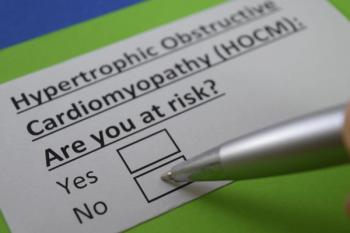
- Drug Topics May 2024
- Volume 168
- Issue 04
Post–COVID-19 Condition: The Frustrating Fight for Recognition and Treatment
Health care providers must listen to patients who voice their experiences with post–COVID-19 condition symptoms. Only then can a clearer picture of the condition emerge for the millions of patients who have the near-invisible disease.
Many people associate COVID-19 with the initial illness—symptoms of a fever, cough, or temporary loss of taste or smell—that prompted stay-at-home orders and lockdowns during the onset of the pandemic in March 2020. Although the public health emergency has since been declared over, for many, the effects of the virus persist. More people are coming forward to recount their experiences with post–COVID-19 condition (PCC), a complex condition where symptoms—more than 200 of which have been identified1—can linger for months, and years, after the initial infection.
The PCC landscape is a complicated one: Although there are pockets of awareness around the condition, it is still understudied and overlooked. Many who are living with its often-invisible symptoms—such as brain fog, dizziness, headaches,
“I think there is good awareness in some pockets, but really, the problem is that this condition doesn’t show up well on standard medical tests,” said Lindsay McAlpine, MD, BSc, director of the Yale NeuroCOVID Clinic and an assistant professor in the Division of Neurological Infections and Global Neurology at the Yale School of Medicine in New Haven, Connecticut. “When you go to a typical provider, they’re going to do tests for your shortness of breath, or your brain fog, and they’re going to say, ‘Your MRI is normal, your lungs look normal. I can’t help you. That’s it, we’re done.’ That leads to medical disbelief and gaslighting on the physician side, and to frustration and doubt on the patient side.”
This frustration and doubt can exacerbate the mental health issues already associated with PCC, namely anxiety and depression. A 2023 advisory from the US Department of Health and Human Services, through the Substance Abuse and Mental Health Services Administration, highlighted the far-reaching impacts of the condition’s
“Mood issues after COVID-19 are very prevalent. They can fall into numerous buckets: They can worsen a previous tendency for anxiety or depression, or cause brand-new anxiety or depression,” said McAlpine. “In a separate bucket, they can cause reactive anxiety or depression. When patients are experiencing [PCC], and they don’t understand it and it’s new to them, they can get frustrated, which exacerbates feelings of anxiety, sadness, and even [posttraumatic stress disorder].”
Beyond the profound impact of PCC on a person’s daily functioning, the condition is widespread; an estimated 17 million people in the US reported having PCC in March 2024.4 What’s more, a 2022 analysis gleaned that PCC costs the American economy more than $200 billion a year in productivity, lost wages, and medical costs.5 But despite the harm, prevalence, and costliness, research regarding PCC has faltered.
Although the government has funneled $1 billion into studying PCC,6 patients with the chronic disease have reaped little benefit, in part due to research efforts that have not been able to keep pace with the urgency and scale of the problem. This challenge is further exacerbated by the novelty of the condition; researchers haven’t been able to reach a consensus on clear study end points. Still, the demand for insights into the mechanisms of the condition grows. In January 2024, patients with PCC testified in front of Congress, pleading for a bolstered federal response to the chronic disease. Some wielded signs demanding that the government declare the condition “a national emergency.”7
Skepticism among health care providers about the legitimacy of PCC as a chronic illness might also be hindering research efforts, according to McAlpine.
“We’ll hear frequently from physicians that they don’t believe in [PCC, but] it really isn’t about belief. We’re in a scientific field. It’s about the science,” said McAlpine. “It’s about the data, the scientific evidence, and listening to the patients. Once you hear about [PCC] hundreds of times, you have to know that there’s something there.”
Researching PCC is not a one-size-fits-all approach. More than 200 PCC symptoms have been documented,1 and the condition presents differently across patients. In her continued research of the condition, however, McAlpine has gained some valuable insights. Since it plays a big role in the neurologic symptoms of PCC, McAlpine addresses sleep with every PCC patient she sees. She has also found that using standard-of-care migraine treatments with patients who present with new or worsening headache after a
“To develop a study population, a homogeneous study population is important—right now, a heterogenous population exists,” said McAlpine. “You want to make sure that when you’re testing a treatment, you’re using it in people who have what you’re trying to treat. Once we have a solid diagnosis and biomarker, then the clinical trials will explode. We really need that for [PCC] so that we can try a number of treatments and…drill down and identify effective treatments.”
Although public awareness of PCC has grown, significant challenges remain. Increased funding, standardized diagnostic tools, and a unified research approach are all crucial steps toward developing effective treatments. But, most importantly, health care providers must listen to patients. Only then can a clearer picture emerge of PCC for the millions of patients who have the near-invisible condition.
“Get familiar with the syndrome and get familiar with the treatments that we have available now,” McAlpine said. “Validate the patient—that should always come first. Make sure you’re listening to them and provide them with some concrete steps that they can take to improve their symptoms.”
READ MORE:
Don’t get left behind: Sign up today for our
References
1. Doctrow B. Immune and hormonal features of long COVID. National Institutes of Health. October 3, 2023. Accessed April 15, 2024. https://www.nih.gov/news-events/nih-research-matters/immune-hormonal-features-long-covid
2. Marshall M. How COVID-19 affects the brain. New Sci. 2023;257(3424):14-15. doi:10.1016/S0262-4079(23)00189-6
3. HHS issues advisory on mental health symptoms and conditions related to long COVID. News release. US Department of Health and Human Services. June 21, 2023. Accessed April 15, 2024. https://www.hhs.gov/about/news/2023/06/21/hhs-issues-advisory-mental-health-symptoms-and-conditions-related-long-covid.html
4. Burns A. As recommendations for isolation end, how common is long COVID? KFF. April 9, 2024. Accessed April 15, 2024. https://www.kff.org/coronavirus-covid-19/issue-brief/as-recommendations-for-isolation-end-how-common-is-long-covid/
5. Bach K. New data shows long COVID is keeping as many as 4 million people out of work. Brookings. August 24, 2022. Accessed April 15, 2024. https://www.brookings.edu/articles/new-data-shows-long-covid-is-keeping-as-many-as-4-million-people-out-of-work/
6. Zhang RC, Ladyzhets B. The NIH has poured $1 billion into long COVID research–with little to show for it. Stat News. April 20, 2023. Accessed April 15, 2024. https://www.statnews.com/2023/04/20/long-covid-nih-billion/
7. Theis L. Long COVID patients testify on Capitol Hill for more support. Scripps News. January 18, 2024. Accessed April 15, 2024. https://scrippsnews.com/stories/long-covid-patients-testify-on-capitol-hill-for-more-support/
Articles in this issue
over 1 year ago
FDA Approves Novel Topical Therapy for Molluscum Contagiosumover 1 year ago
Reviewing Efficacy, Safety of Weight Loss Therapies in T1Dover 1 year ago
Sunscreen Safety: What Every Pharmacist Needs to Knowover 1 year ago
In Frankfurt, Pharmacy Takes a Different Approachover 1 year ago
OTC Product Roundup: Skin Careover 1 year ago
How Individuals are Committing E-Prescription Fraudalmost 2 years ago
Measles Cases in the US Increased Significantly in 2024Newsletter
Pharmacy practice is always changing. Stay ahead of the curve with the Drug Topics newsletter and get the latest drug information, industry trends, and patient care tips.











































































































































































































